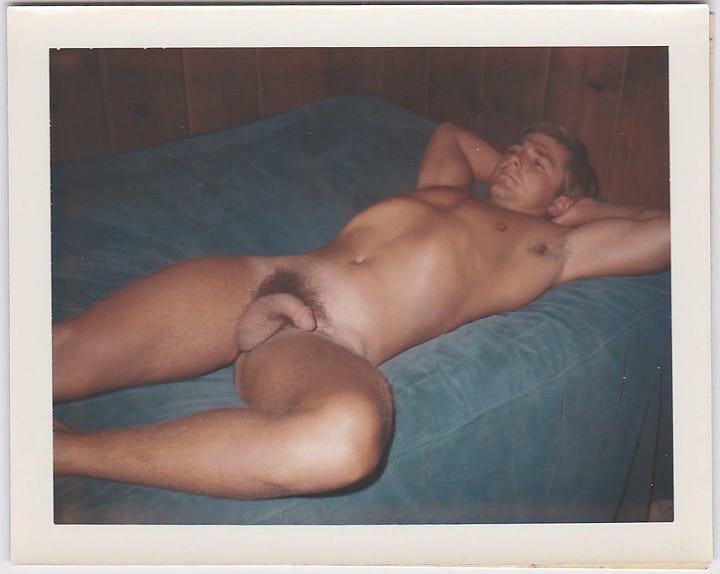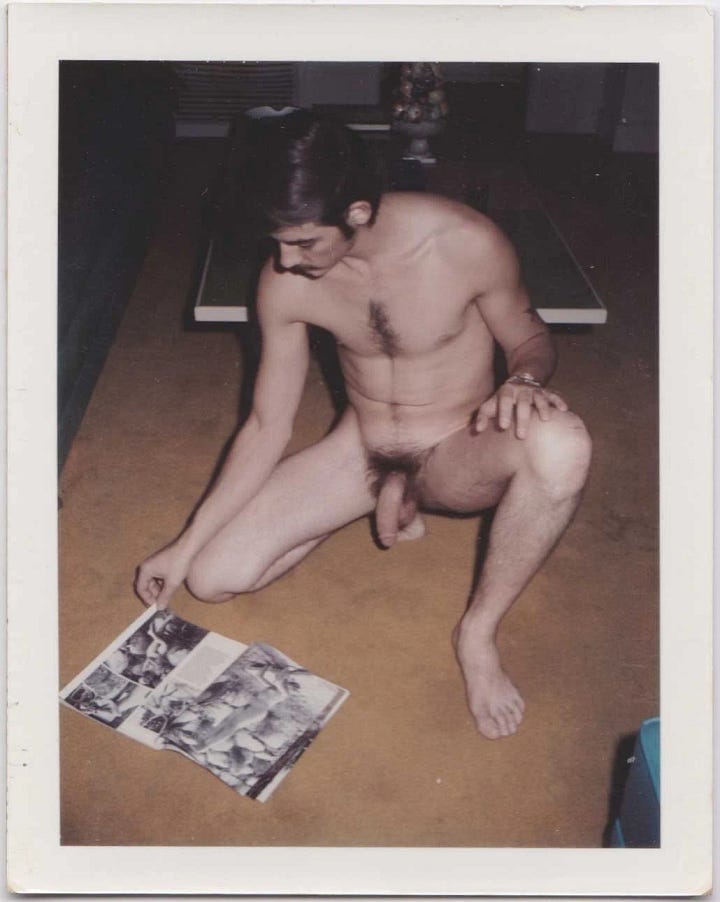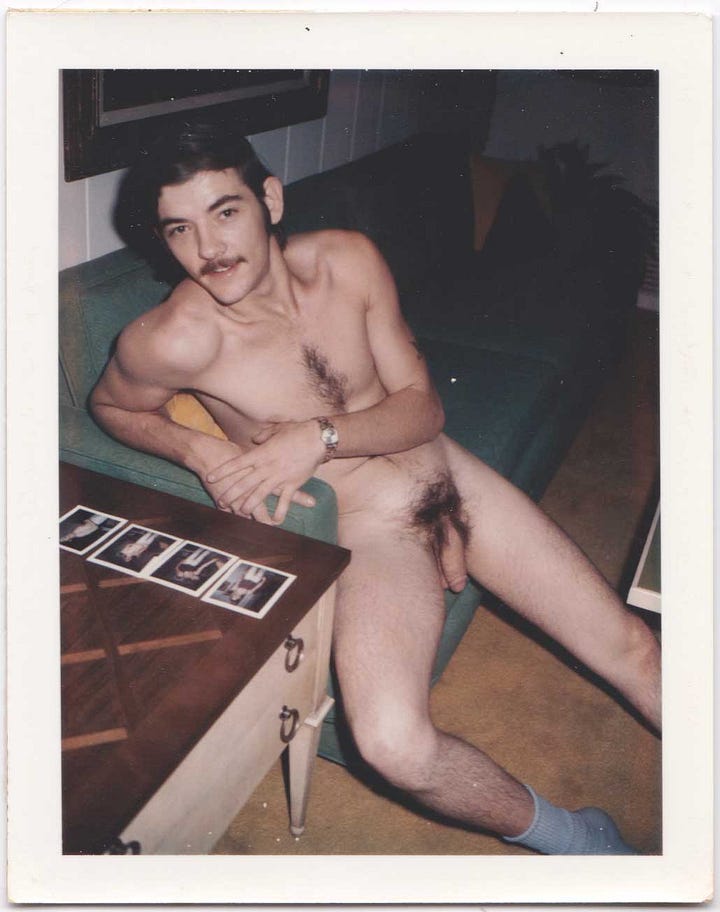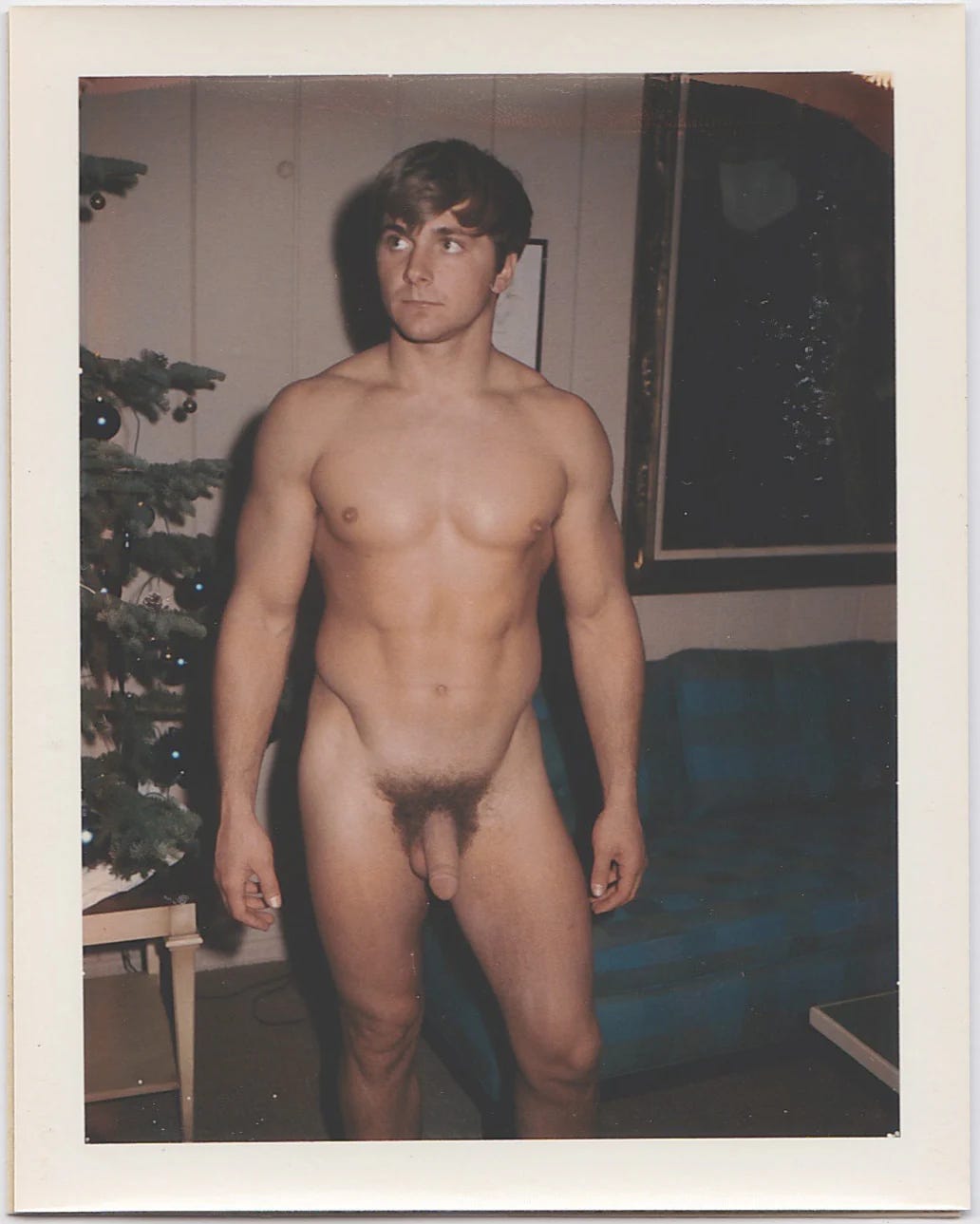This Rare Collection of Vintage Gay Polaroids Resurfaced After 60 Years
How one amateur photographer and his brave models defied the era’s harsh laws—and created a timeless testament to queer courage.
Exposing Dr. Hull: Vintage 1960s Gay Polaroids and the Secrets They Reveal
You might never guess that the mild-mannered psychologist who treated inmates by day would moonlight as a daring underground photographer by night. But that’s exactly what Dr. Hull—orchid enthusiast, Beverly Hills resident (in a home once owned by Jim Nabors), and Polaroid hobbyist—ended up doing. Sometime in the early 1960s, he turned his fascination with photography into a clandestine project. The images he produced of nude and near-nude men have quietly survived for decades, recently coming to light only after his passing.
These Polaroids, now part of a captivating collection archived at Homobilia, give us a peek into an era when explicit male imagery walked a fine line between private thrill and outright criminality. The men posing for Dr. Hull weren’t exactly performing X-rated acts—there’s plenty of skin and a few impressive erections on display, but no documented sexual encounters. Nonetheless, capturing these pictures in 1960s America was incredibly risky.


The Hidden World Behind the Photos
Behind the pleasing orchids and posh Beverly Hills façade, Dr. Hull’s nighttime gatherings involved men—probably in their twenties or thirties—lounging around, chatting over a beer, flipping through physique or muscle magazines, and sometimes shedding their clothes. Perhaps they were friends, lovers, or acquaintances drawn in by the lure of a camera and a laid-back vibe. Whatever the dynamic, there’s a breezy confidence in their glances and stances.
But let’s not kid ourselves: to even consider posing nude in 1960s America was wildly courageous. Sodomy remained a felony across all states until 1962, often punished by lengthy prison terms and forced labor. Anyone distributing photos featuring frontal nudity could be hit with federal obscenity charges until at least 1967–68. People risked losing their jobs, families, and freedom if such images ever fell into the wrong hands.


That the pictures still exist is a minor miracle. Cops routinely cracked down on gay photographers, especially if they suspected anything “obscene.” And in Dr. Hull’s line of work—he was employed by the city, counseling incarcerated individuals—exposure of his sideline might have ended his career, if not his entire livelihood.
Members-Only Access: Unlock the Full Story
The next section goes deep into the Polaroid revolution, how it helped spark a quieter sort of queer liberation, and the stories behind several of Dr. Hull’s most mesmerizing images. If you’re already a member, keep reading! Otherwise, become a member now to dive into the complete article and gain full access to our premium library of hidden LGBTQ+ history.








